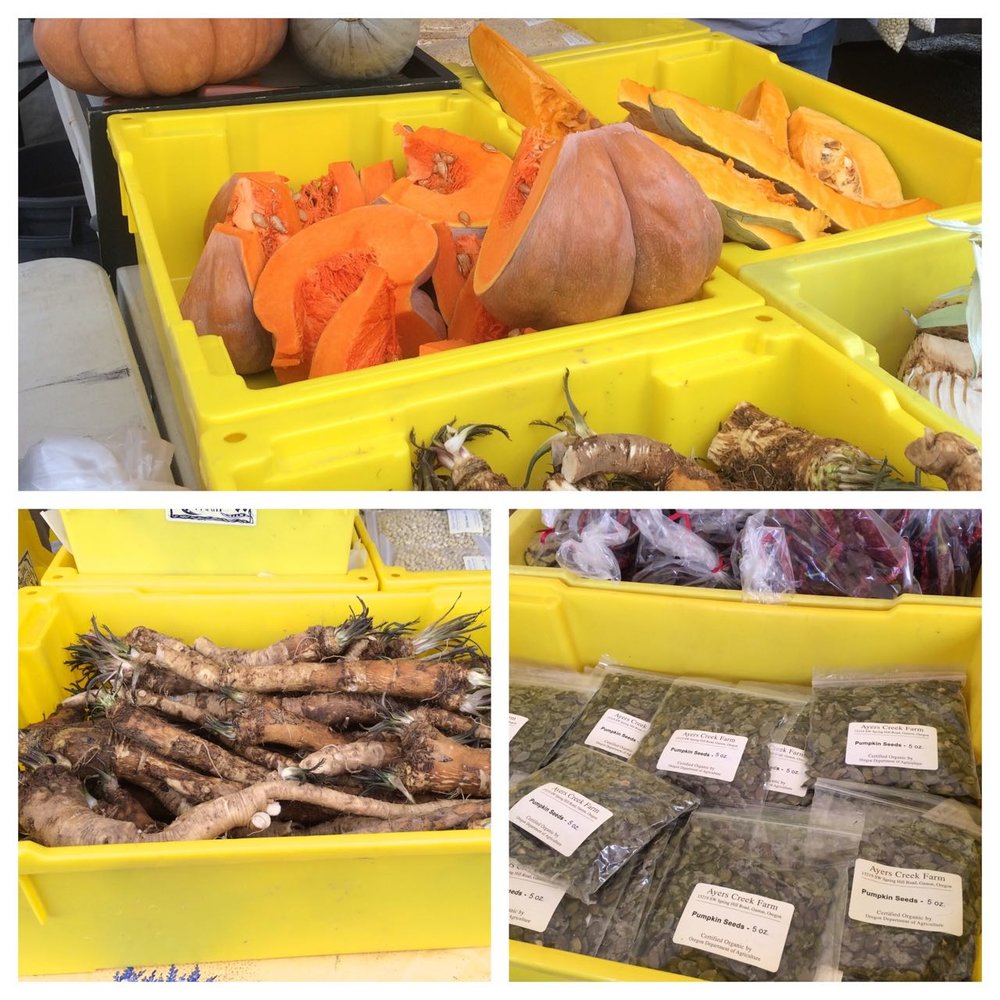Ayers Creek Farm Newsletter August 16 2015 Market
Guest User
One of Rachel Carson's early articles for the American Naturalist Society was "How About Citizenship Papers for the Starling?" Loud, joyful and brash, these handsome birds are always looking for a party. Competent and improvisational songsters, but most of all they are engaging mimics. If a siren goes off at the firehouse, they will spend the next hour or two refining their siren call until, that is, a rooster crows, and then they are on that project. A tom quail calls, and an echo erupts from every idle starling. Around noontime, they descend on the bird bath in a group, splashing about until barely a drop remains, leaving a few flower petals and leaves afloat in the puddle. For some reason, they feel compelled to decorate their bath, as well as their nest, with pretty bits and fragrant herbs. Of course, when they bathe the noisy creatures squawk just like children enjoying a summer pool, then fly off as a group for some other diversion or entertainment.
Back in 1939, Carson was urging us to drop our animus for the bird and appreciate its pluck and value. Nothing has changed, starlings still bear the double burden of being an immigrant, and flying while black. In farming areas, the starling and the crow can be shot at will, any time of the year. Going back a half century, the starling was accused of spreading a lung disease, histoplasmosis, threatening an as yet unrealized public health crisis. Shortly after the E. coli and spinach episode in 2006, scientists at Ohio State Extension raised the public health banner against the starling once more, along with a cool million, to see if the bird causes food safety problems by spreading the diseases from feedlots. Apparently, they convinced enough people of the problem, and received another $2.3-million. For what its worth, starlings are attracted to feedlots because they are primarily insectivores, and insects are provided there in abundance. Our filthy food production habit is their treasure.
Interestingly, the one case we recall where a flock of birds were implicated in an E. coli outbreak happened in English pea field in Alaska, and migrating Sand Hill Cranes were named as the culprit. But they are not reviled like the starling, so no snarling about a public health crisis due to cranes. The real problem was that the peas were machine harvested and no one checked the field beforehand. Machines do not not share our visceral reaction to animal feces, they plod along happily consuming the crop. Our displacement of humans with machines in the harvest of fruits and vegetables warrants more attention.
In an odd way starlings and other wild creatures received good news this week. Following the 2006 spinach problem, and other similar incidents, including strawberries and hazelnuts from Oregon, food safety wonks advised farmers that they should create lifeless zones around their farms to eliminate the possibility of wildlife bringing in E.coli, Salmonella and other food pathogens as a field contaminant. Remove trees and brush so birds can't roost or nest nearby, and animals can't hide. The mantra was that more scorched earth around the fields, the better, for nature is devious enemy that never sleeps. In brief, the research found no corresponding decrease in disease causing strains of Salmonella and E. coli associated with these measures. In fact, in some cases, an increase was detected. Diverse landscapes provide many advantages, and food safety may be one of them, but never overstated.
There are many birds that eat farmers' fruits, but it is the epicurean delight starlings take in finding a good patch of cherries or berries that farmers find particularly galling. The merry cacophony rubs their nerves the wrong way. But farmers are always stingy with credit. When we cultivate the soil, an army of starlings waddles behind the tractor gleaning every wireworm and cutworm available, sometimes carrying eight or ten grubs in their long yellow bills. They fly back to their nest, and return seemingly just moments later. It we are not exposing grubs for them, they are working the berry fields and orchard, again carrying back a full bills of food. Watch their nest holes, and you will see them flying back and forth from sunup to dusk. Although they eat some fruit, insects and larvae are the staple of their diet.
The starlings are cavity nesters, and another one of the dire predictions made 50 years ago, repeated with the alacrity of a starling's mimicry, is the usurpation of other cavity nesters by these aliens. In our observations, flickers, starlings and kestrels share similar sized cavities, and they alternate sites from year to year. Swallows, chickadees, bluebirds and nuthatches use much smaller cavities than the starling. All of these cavity nesters have healthy population in spite of this dastardly usurper. In fact, the alternation of nest sites may provide a valuable health function for the three larger birds. They belong to three different avian orders, and consequently host different parasites, mites and insects. The birds are probably following a similar practice to farmers who rotate crops from different plant families to reduce disease and insect problems.
Finally, one more endearing trait of the starling. Remember the petals and leaves in the birdbath? It is part of their courtship ritual. The male starling finds a suitable cavity and builds a nest of fine grass decorated with petals and fragrant leaves. Very much like the bower bird, his female suitors visit and decide whether he is of the salt. When a female accepts the proposition, they finish the nest together, do some other stuff and she lays her eggs.
______________________
We will haul in more Chesters, they are holding up well. As one produce manager noted this week, they have a more floral quality. Much thinner skinned as well.
We will set aside room for preserves this week. We will have chickpeas, frikeh and hulless barley. Tomatillos, onions, garlics, shallots and tarragon as well.
The intense delivery schedule has prevented us from checking the crops, but some other stuff should show up.
Best,
Carol and Anthony
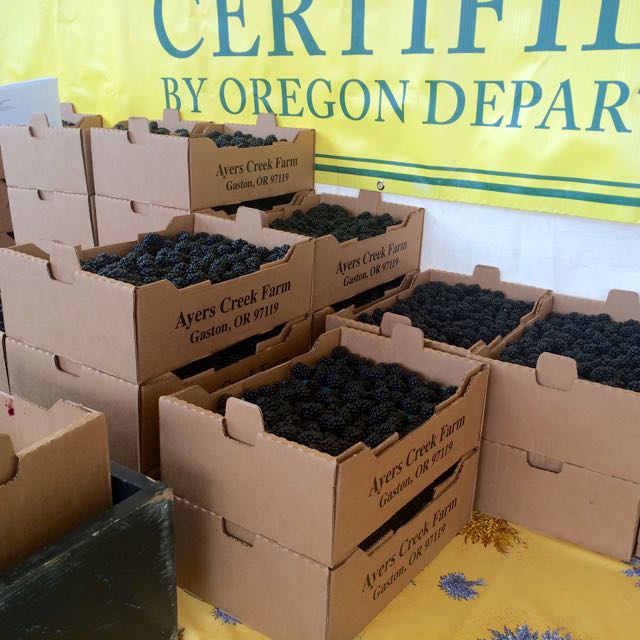
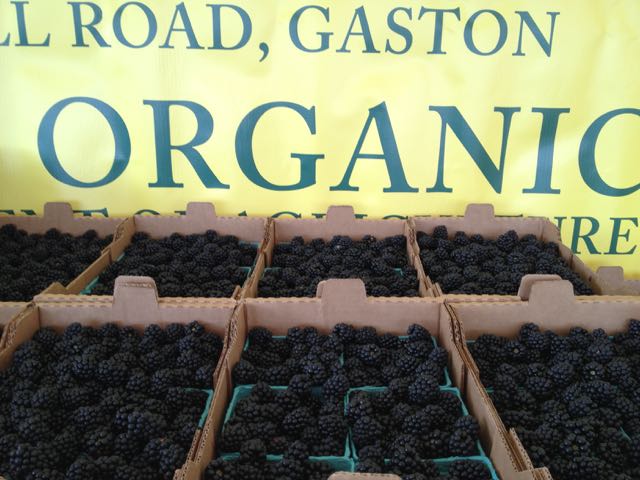
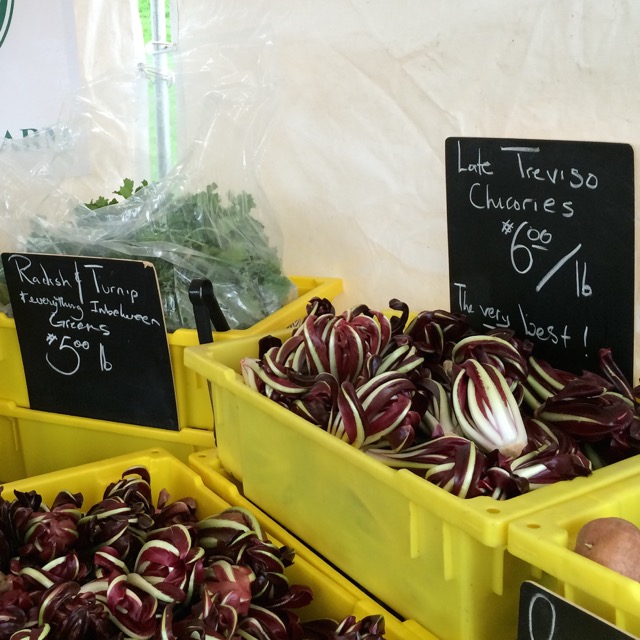
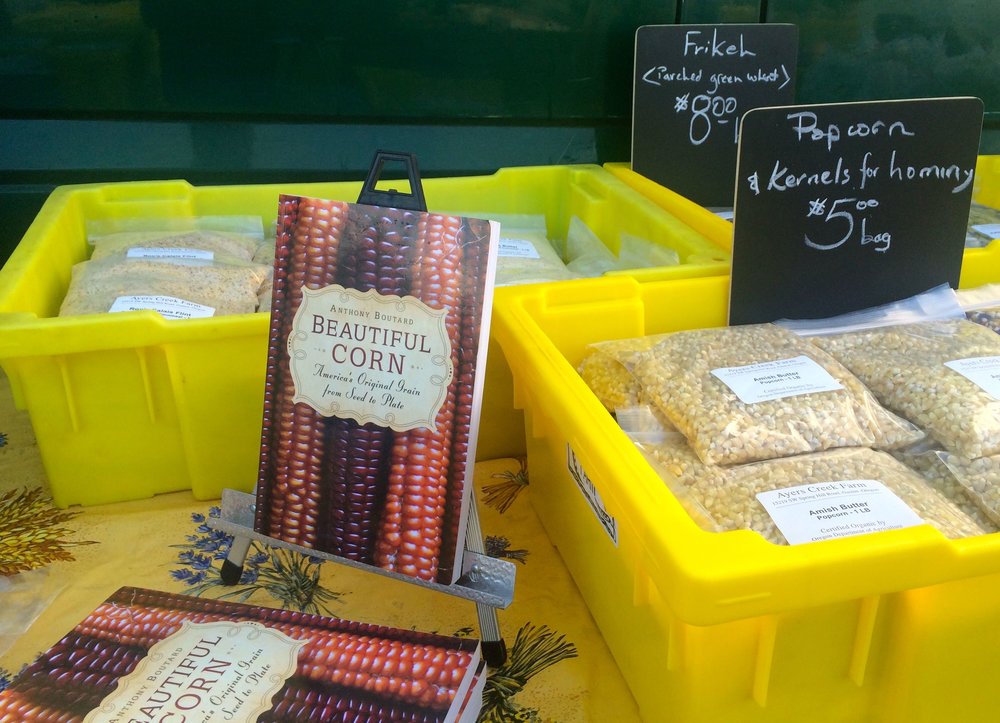
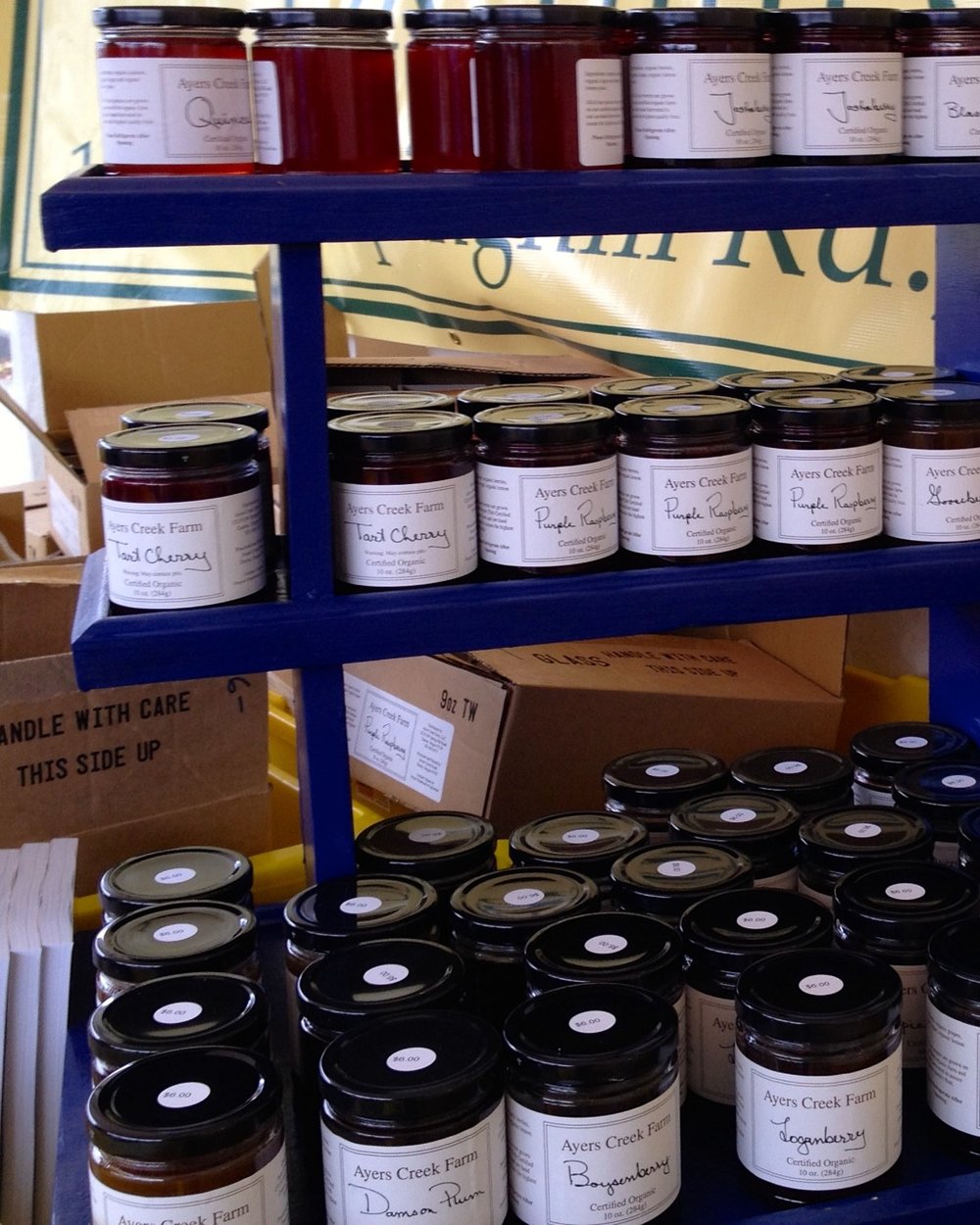
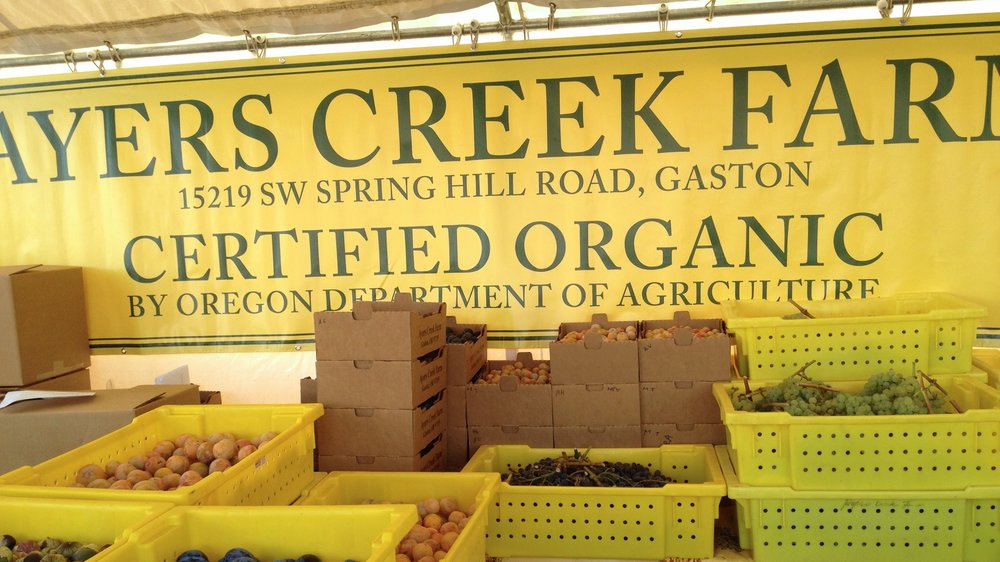



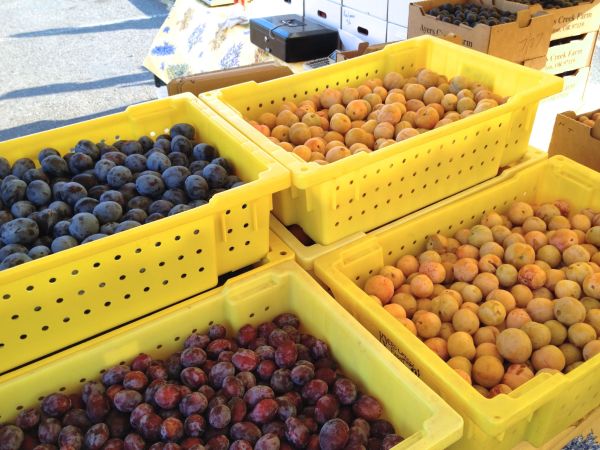



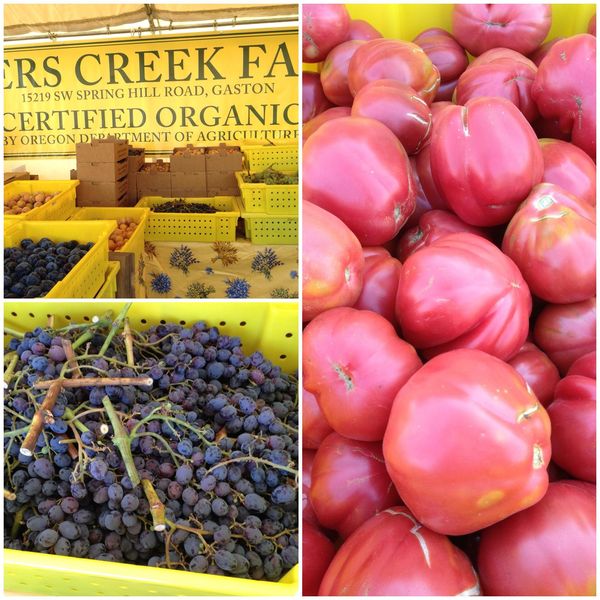

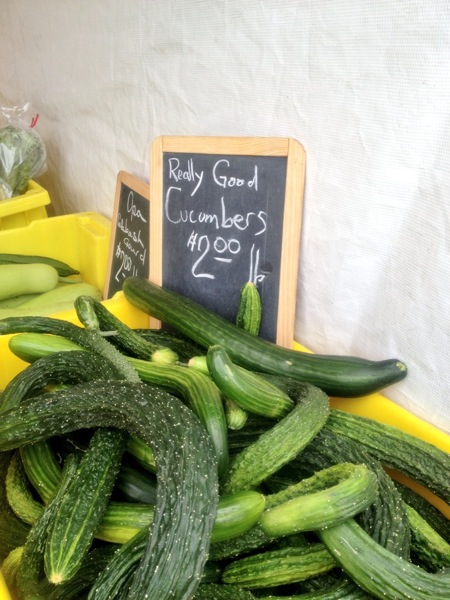

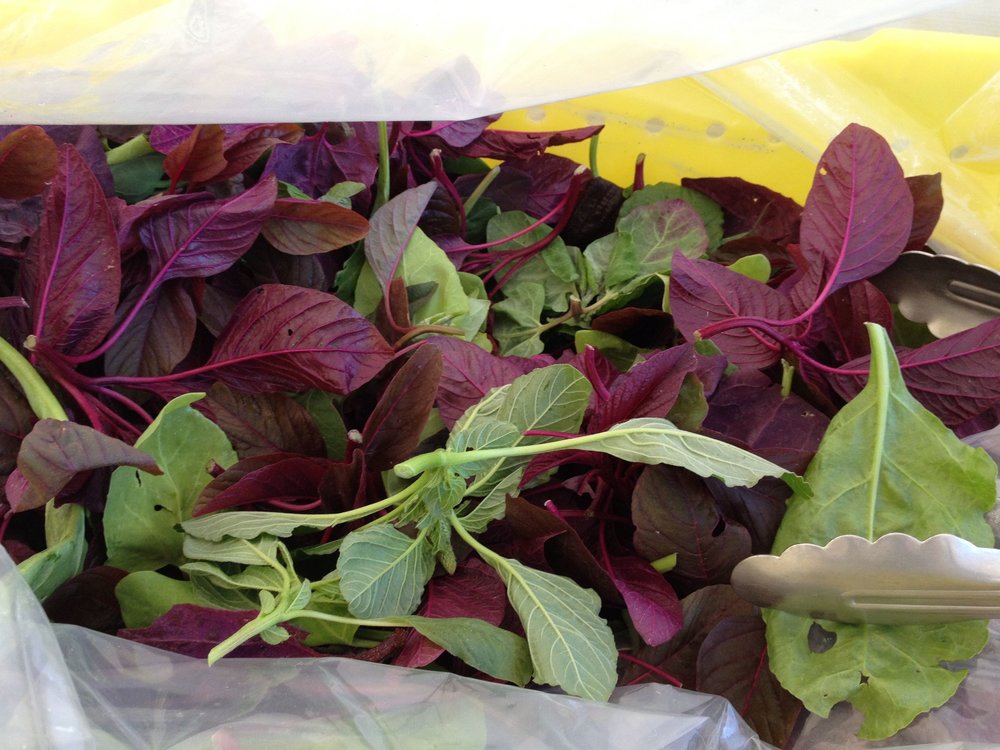
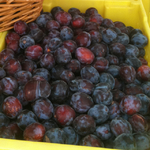
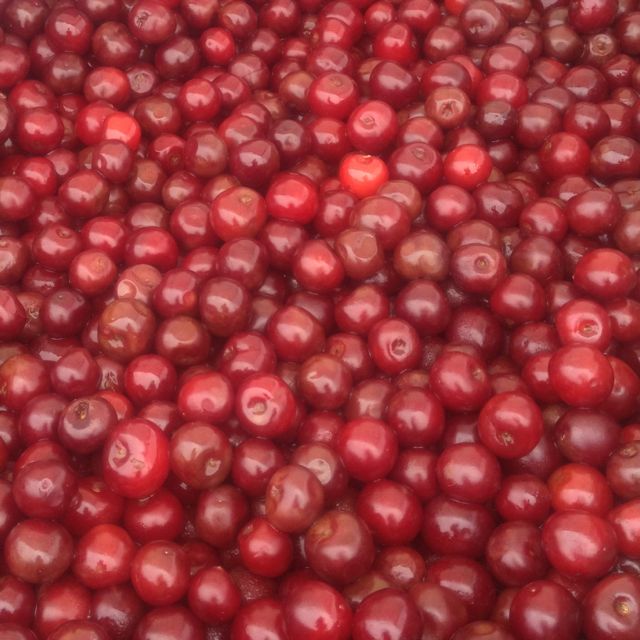
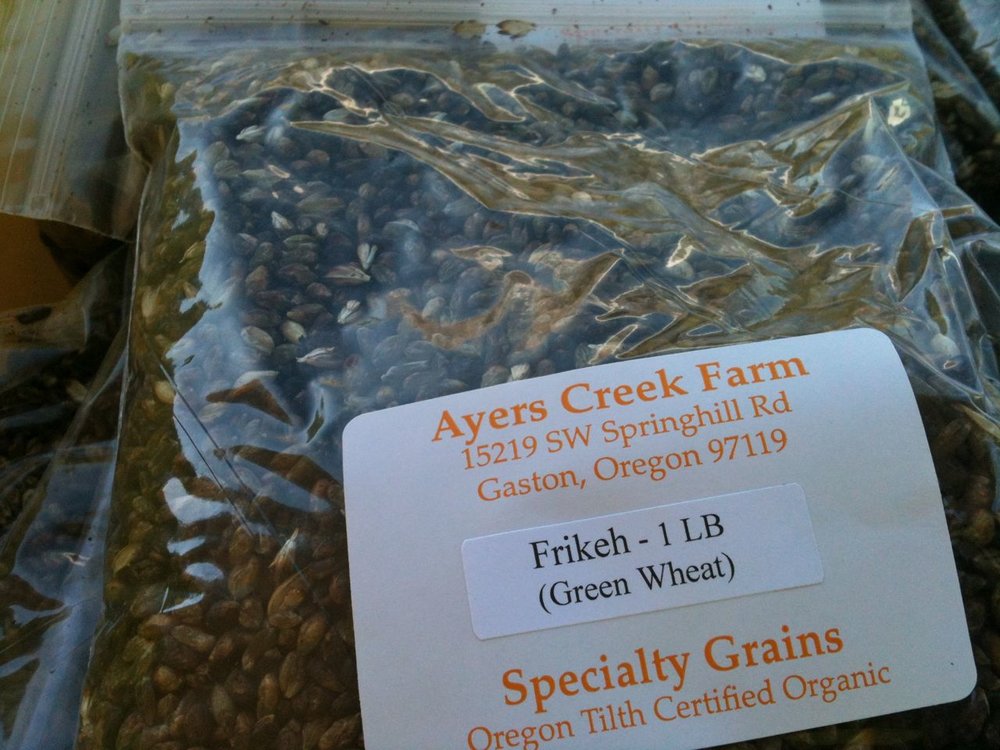
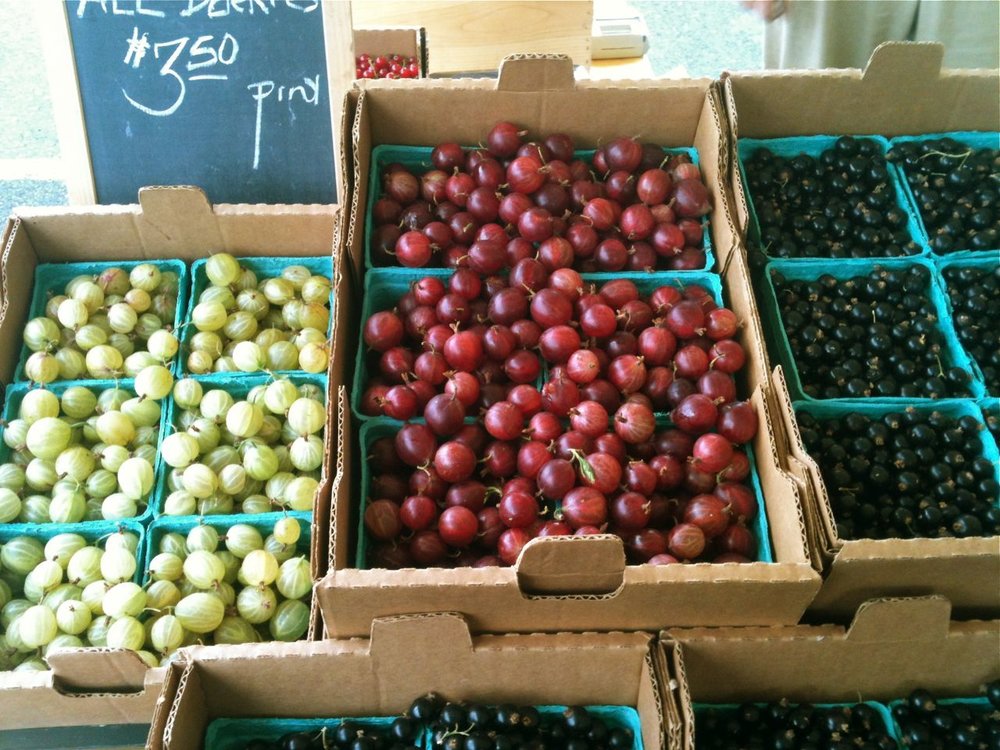
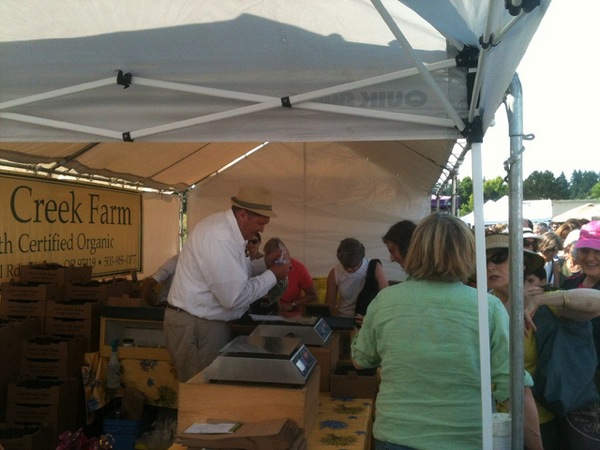 This spell of hot weather should be a mere memory by the time we finish hauling the flats of berries out of the van at Hillsdale. It has tested our mettle. You will hear the tintinnabulation of the bovine necklace around 10:00 AM.
This spell of hot weather should be a mere memory by the time we finish hauling the flats of berries out of the van at Hillsdale. It has tested our mettle. You will hear the tintinnabulation of the bovine necklace around 10:00 AM.